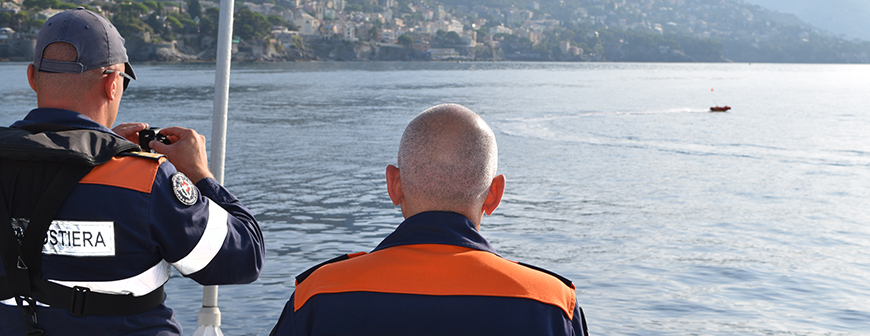
The Center for Robotic Assisted Search and Rescue (CRASAR), a division of the Texas A&M Engineering Experiment Station’s Center for Emergency Informatics, recently conducted a mass casualty exercise in coordination with the Italian Coast Guard and Interuniversity Center of Integrated Systems for the Marine Environment (ISME) in Genoa, Italy.
The exercise explored the use of an EMILY lifeguard assistant unmanned surface vehicle, a Fotokite tethered unmanned aerial vehicle (UAV) and LTE cellular communications to prevent drowning of refugees trying to reach Italy from Africa.
EMILY robots were deployed to Greece in January 2016 in response to the wave of migrations from Turkey. They’re currently being used by the Hellenic Coast Guard and the Hellenic Red Cross, and have already been credited with saving more than 24 people.
According to CRASAR director Dr. Robin Murphy, this exercise identified key differences between the Turkey-to-Greece migrations and the Africa-to-Italy migrations. For example, the scale of potential rescue events is much different. In Greece, boats of 40-50 people usually ran into problems close to shore.
In Italy, the boats can have between 200 and 800 people, and rescue operations are taking place much further out. Those differences affect the unmanned system design, resulting in new research directions in autonomous navigation, human-robot interaction with victims in the water and the use of UAVs.
“When you look at the situation in Greece, and then scale up to the situation in Italy, you can see the increased value of having UAVs to help assess the situation,” Murphy said. “We can better identify who needs immediate help from rescuers in the water, and who can be helped by EMILY or perhaps even a basic floatation device.”
The CRASAR team consisted of Murphy, graduate students Grant Wilde and Jan Dufek, and undergraduate Rebecca Schofield from the Department of Computer Science and Engineering at Texas A&M University.
“Everyone focuses on the robots, but Texas A&M researchers are leading the way on training our students to think across disciplines in order to consider how sensors, wireless networks and visualization tools can be integrated into truly useful systems,” Murphy said.
The exercise occurred over three days from Sept. 22-24 in Genoa. It was arranged by Professor Gianluca Antonelli of the University of Cassino and Professor Pino Casalino through ISME, a consortium of seven Italian universities in conjunction with the Italian Coast Guard Genova, led by Commander Massimo Kothmeir.
EMILY creator Tony Mulligan of Hydronaulix, medical expert Lynn Marie Kelly-Mulligan and Dr. Walt Magnussen of the Texas A&M Internet2 Technology Evaluation Center also participated.
With funding from the National Science Foundation Rapid Response Research Program, CRASAR is accelerating research in robotics, sensors and networks for search and rescue operations.